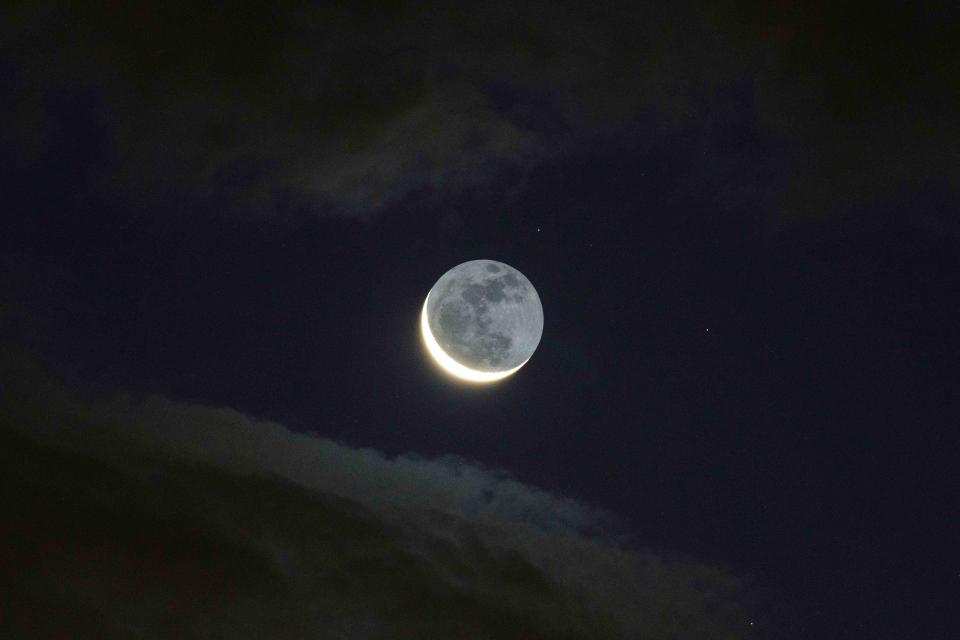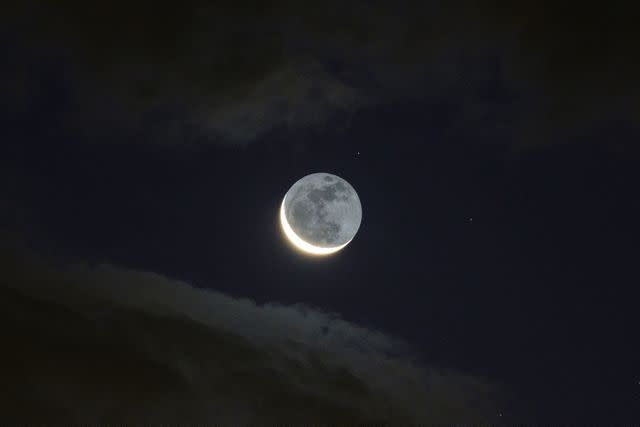The Da Vinci Glow Will Light Up the Moon Tonight—Here's How to See It
- Oops!Something went wrong.Please try again later.
The phenomenon causes the crescent part of the moon to glow brightly, while the dark side is visible as an overcast.

Jordan Lye / GETTY IMAGES
After saying goodbye to May's Eta Aquariid meteor shower, stargazers are gearing up to welcome another celestial event this month—the Da Vinci Glow. Also known as Earthshine, the phenomenon creates a ghostly glow that illuminates the entire moon.
The celestial occurence is named after artist and inventor Leonardo da Vinci, who set out to discover the cause of Earthshine during the 15th century. At the time, he believed the phenomenon was caused by sunlight being reflected by earth's oceans to illuminate the moon, according to NASA. While Da Vinci was close in his hypothesis, the primary cause of the glow is light reflected off clouds.
Related: 10 Must-Haves for a Night of Stargazing

Jordan Lye / GETTY IMAGES
The Da Vinci Glow is only visible when there's a crescent moon close to the horizon at sunrise or sunset. The phenomenon is visible during the last few days and the first few days of the moon's orbit around earth. During the event, you'll see the crescent part of the moon glowing brightly, while the dark side is visible as an overcast. The light source comes from Earth, which lights up the night 50 times brighter than a full moon, NASA states.
This month, the Da Vinci Glow was easiest to see in the evening following the new full moon on May 19. This is because the reflected light was about 10 percent brighter than normal. According toLiveScience, stargazers also got a good glimpse in the hour following sunset on Sunday, May 21 and Monday, May 22; tonight, Tuesday, May 23, marks the last night for easy viewing. The phenomenon is best viewed with the naked eye—stargazing binoculars may help but they aren't necessary.

